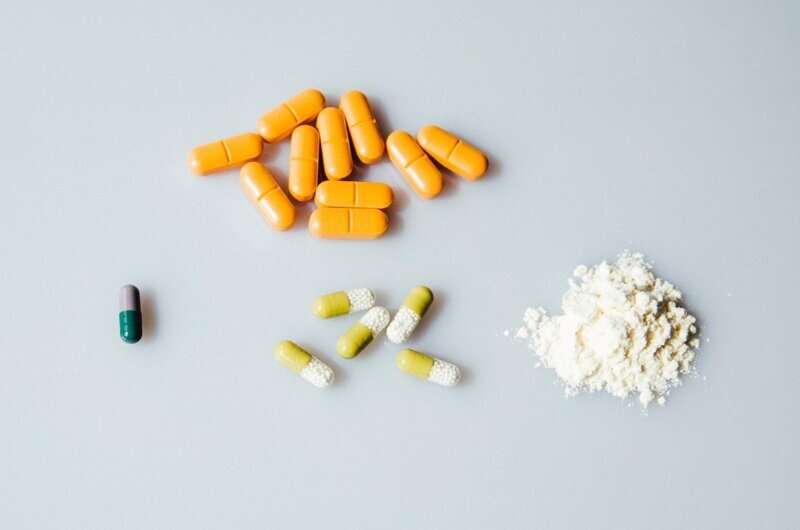
Stimulants are first-line drugs for children and adults diagnosed with attention-deficit hyperactivity disorder (ADHD). But how do they actually work?
First, let’s look at the brain
ADHD is a neurodevelopmental condition, which means it affects how the brain functions.
Medical imaging indicates people with ADHD may have slight differences in their brain’s structure, the way their brain regions work together to perform tasks, and how their brain’s chemical messengers, called neurotransmitters, pass on information.
These brain differences are associated with the symptoms of ADHD, including inattention, impulse control and problems with memory.
What stimulants are prescribed in Australia?
The three main stimulants prescribed for ADHD in Australia are dexamfetamine, methylphenidate (sold under the brand names Ritalin and Concerta) and lisdexamfetamine (sold as Vyvanse).
Dexamfetamine and methylphenidate have been around since the 1930s and 1940s respectively. Lisdexamfetamine is a newer stimulant that has been around since the late 2000s.
Dexamfetamine and lisdexamfetamine are amphetamines. Lisdexamfetamine is inactive when it’s taken and actually changes into active dexamfetamine in the red blood cells. This is what’s known as a “prodrug”.
So how do they work for ADHD?
Stimulant drugs are thought to alter the activity of key neuotransmitters, dopamine and noradrenaline, in the brain. These neurotransmitters help with attention and focus, among other things.
Stimulants increase the amount of dopamine and noradrenaline in the tiny gaps between neurons, known as synapses. They do this by predominantly blocking a transporter that then prevents their re-uptake back into the neuron that released them.
This means more dopamine and noradrenaline can bind to their respective receptors. This helps connected neurons in the brain talk to one another.
Amphetamines also increase the amount of dopamine the neuron releases into the synapse (the tiny gaps between neurons). And it stops the enzymes that break down dopamine. This results in an increase of dopamine in the synapse.
What effect do they have on ADHD symptoms?
We still don’t fully understand the underlying brain mechanisms that change behavior in people with ADHD.
But research shows stimulants that modulate noradrenaline and dopamine can improve brain processes such as:
- attention
- memory
- decision-making
- task completion
- hyperactivity.
They can also improve general behavior, such as self-control, not talking over the top of others, and concentration. These behaviors are important for social interactions.
Stimulants reduce ADHD symptoms in about 70% to 80% of children and adults who take them.
Some people will notice their symptoms improve right away. Other times, these improvements will be more noticeable to parents, caregivers, teachers, colleagues and partners.
Not everyone gets the same dose
The optimal stimulant dose varies between individuals, with multiple dosage options available.
This enables a “start low, go slow” approach, where the stimulant can be gradually increased to the most effective dose for the individual.
There are also different delivery options.
Dexamfetamine and methylphenidate are available in immediate-release preparations. As these have short half-lives (meaning they act quickly and wear off rapidly), they are often taken multiple times a day—usually in the morning, lunch and afternoon.
Methylphenidate is also available in long-acting tablets (Concerta) and capsules (Ritalin LA). They are released into the body over the day.
Lisdexamfetamine is a long-acting drug and is not available in a short-acting formulation.
The long-acting stimulants are generally taken once in the morning. This avoids the need to take tablets during school or work hours (and the need to store a “controlled drug”, which has the potential for abuse, outside the home).
What are the side effects?
The most common side effects are sleep problems and decreased appetite. A recent study showed children and young people taking methylphenidate for ADHD were around 2.6 times more likely to have sleep problems and 15 times more likely to have a decreased appetite than those not taking methylphenidate.
Headache and abdominal pain are also relatively common.
Can someone without ADHD take a stimulant to improve productivity?
Stimulants are tightly controlled because of their potential for abuse. In Australia, only pediatricians, psychiatrists or neurologists (and GPs in special circumstances) can prescribe them. This follows a long assessment process.
As stimulants increase dopamine, they can cause euphoria and a heightened sense of well-being. They can also cause weight loss.
A common myth about stimulant medicines is they can improve the concentration and productivity of people without ADHD. A recent study shows the opposite is true.
This study gave a group of 40 people online arithmetic tasks to complete across four sessions. At each of the sessions, participants were given either a placebo or a stimulant before completing the task.
The results showed that while stimulants did not impact getting the correct answer, it increased the number of moves and time to solve the problems compared to a placebo. This indicates a reduction in productivity.
However, the myth that stimulants improve study prevails. It’s likely that users feel different—after all, they are taking a medicine that speeds up messages between the brain and body. It may make them “feel” more alert and productive, even if they’re not.
Provided by
The Conversation
This article is republished from The Conversation under a Creative Commons license. Read the original article.
Source: Read Full Article
